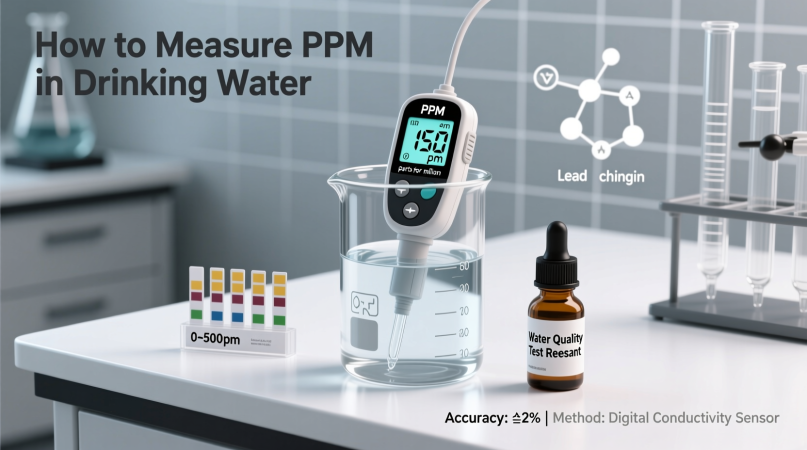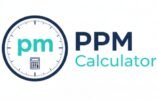
How to Measure PPM in Drinking Water
Measuring PPM (parts per million) in drinking water is a crucial step for anyone concerned about health, taste, or regulatory compliance. Whether you’re a homeowner, facility manager, or water quality professional, knowing how to check and interpret PPM levels will help you ensure your water is clean and safe.
Why PPM Matters in Drinking Water
What Is PPM in Water Testing?
PPM, or parts per million, is a unit that tells you how much of a specific substance—such as minerals, salts, metals, or contaminants—is present in your water. For drinking water, common PPM measurements include total dissolved solids (TDS), chlorine, nitrates, and heavy metals. Monitoring these levels protects your health and keeps your water within local and international safety standards.
For a deeper dive into the concept, see What is PPM?.
Safe PPM Levels for Drinking Water
Different substances have different recommended PPM limits. For example:
- TDS: Ideally below 300 ppm, acceptable up to 500 ppm (Safe PPM Levels for Drinking Water)
- Chlorine: 0.2–0.5 ppm is effective for disinfection, but should not exceed 5 ppm
- Nitrate: Maximum 10 ppm for infants, 45 ppm for adults
Refer to PPM Standards for Drinking Water and your country’s regulations for more details.
Step-by-Step: Measuring PPM in Your Drinking Water
Step 1: Choose Your Testing Method
There are three main ways to measure PPM in drinking water:
1. Digital TDS Meter
A TDS meter is a handheld device that quickly measures the total dissolved solids in water and displays the result in PPM.
How to use:
- Rinse the sensor with distilled water.
- Turn the meter on and dip it into your water sample.
- Wait a few seconds for the reading to stabilize.
- Record the value shown on the display.
TDS meters are best for overall water quality but do not identify specific substances.
2. Chemical Test Kits
Test kits use chemical reagents to measure specific contaminants (like chlorine, nitrate, or lead).
How to use:
- Collect a water sample in a clean container.
- Add the test reagent following the instructions.
- Wait for the color change and compare to the provided chart.
- Some kits come with a digital reader for more precise ppm results.
For guidance on common mistakes, see PPM Calculation Mistakes.
3. Laboratory Analysis
For the most accurate and comprehensive results, send a sample to a certified water testing laboratory. Labs can test for a wide range of substances and provide results in ppm or mg/L.
Step 2: Convert Units If Necessary
Many tests report results in mg/L, which is equivalent to ppm for water. If you need to convert, use the MG/L to PPM Calculator for instant, accurate conversions.
Step 3: Interpret Your Results
Compare your ppm readings to health guidelines. For example:
- TDS below 300 ppm is excellent; above 500 ppm may affect taste or safety.
- Chlorine above 5 ppm can cause taste and odor issues.
- High nitrate or heavy metals require immediate action.
Visit How to Read PPM Results for tips on interpreting various readings.
Step 4: Take Action If Needed
If your PPM levels are above recommended limits:
- Consider water filtration or treatment systems.
- Retest after treatment to confirm improvement.
- Consult local authorities or water quality experts if you detect hazardous substances.
For region-specific guidance, see PPM for Drinking Water in South Africa.
Tips for Accurate PPM Measurement
Calibrate Your Meter Regularly
Digital meters need periodic calibration using a standard solution to maintain accuracy. Always follow the manufacturer’s instructions.
Use Clean, Contaminant-Free Containers
Residue from previous samples or soap can skew your results. Rinse containers thoroughly with distilled water before use.
Test at Different Times
Water quality can fluctuate with temperature, rainfall, and usage. Testing at different times provides a more complete picture of your water quality.
Keep Records
Log your results to track trends and identify any sudden changes in water quality. This helps with troubleshooting and long-term planning.
For more best practices, visit PPM Best Practices for Lab Work.
Frequently Asked Questions
Is 1 mg/L always equal to 1 ppm in water?
Yes, for most water samples, 1 mg/L ≈ 1 ppm because the density of water is close to 1 kg/L. For exceptions and more detailed calculations, see PPM Formula Variations.
Can I use a TDS meter to measure specific contaminants?
No, TDS meters measure the total dissolved solids but can’t identify which substances are present. Use chemical test kits or lab analysis for targeted measurements.
Where can I find more calculators?
Explore the full range at our Calculator Page for conversions, dosing, and more.
Conclusion
Measuring PPM in drinking water is straightforward with the right tools and knowledge. By following these steps, using reliable meters and test kits, and comparing your results to trusted standards, you’ll have confidence in your water’s safety and quality. For instant conversions and expert support, try the PPM Solution Calculator or visit ppmcalculator for more resources.
Ready to check your water? Use our MG/L to PPM Calculator or learn more at Safe PPM Levels for Drinking Water.

Dr. Robert is an industrial chemist specializing in process control, water purification, and quantitative chemical analysis. She has worked with environmental labs and manufacturing facilities to optimize solutions in parts-per-million (PPM) precision and safety compliance.
At PPMCalculator.com, Dr. Robert ensures the accuracy of each calculator and guide through peer review and data validation. Her mission is to make chemistry tools more reliable for engineers, researchers, and students worldwide.
Follow her professional updates on LinkedIn or contact via info@ppmcalculator.com. For More details, Click here
